
As IoT moves beyond a catchphrase, there is growing interest in knowing if there are any core technical concepts which will remain steady with time.
The best way to do this is to develop an IoT architecture which can be broken down into component blocks. With a well-defined architecture in place, the abstract ideas of IoT can be simplified and studied using concrete and familiar objects.
In short, learning about each IoT component in an architecture can help us enhance our theoretical knowledge of the Internet of things.
But, is it all that simple to develop a proper IoT architecture? Let’s find out.
The Challenge to Explain IoT Architecture
The biggest challenge with explaining IoT architecture is that it is not well-defined. Depending on the source you use, IoT’s architecture can have two, three, four, or even five layers. Even the components can vary a lot. Therefore, currently, there is a lack of consensus on what an IoT architecture should look like.
Compare that to the architecture of the Internet which uses the TCP/IP model: here the components are very well-defined. There is little doubt that Wi-Fi or Ethernet can only exist in the bottom “Network Interface layer” and HTTPS or IMAP in the top “Application layer.”
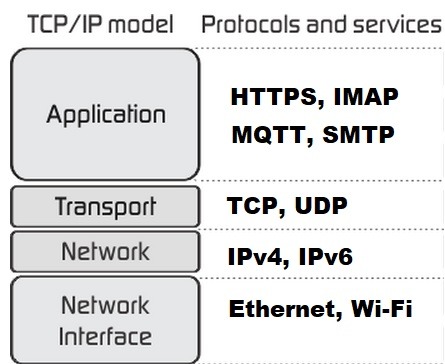
On the other hand, the lack of consensus in IoT architecture is a reality we have to contend with. A European Commission report suggests that “IoT architecture will grow in an evolutionary fashion from a variety of separate contributions rather than a grand plan.”
The lack of a centralized architecture means most IoT networks are being developed on an ad-hoc basis.
At the moment, there are two kinds of IoT architecture models: standardized and proprietary.
IoT Architecture Models (Standardized)
Despite several decentralized ideas at the moment, a number of IoT architecture models are gaining currency.
1. ITU-T Model: The International Telecommunication Union’s Telecommunication Standardization Sector has developed a basic model (shown below) which is fairly easy to understand. The IoT devices are at the bottom of this along with the gateways. The networks are on top of them, and the applications at the highest rung. Security and management exists at each layer.
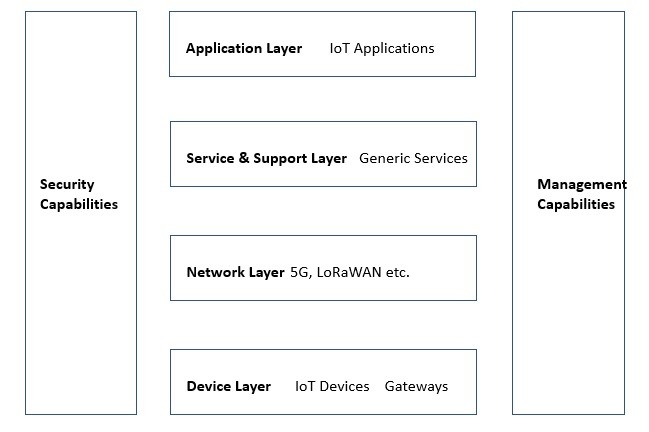
2. NIST Model for Smart Grid: For smart grid companies, National Institute of Standards and Technology (NIST) has come with an interconnected model which integrates service providers, markets, customers, distribution, transmission, and power generation into one cohesive unit.
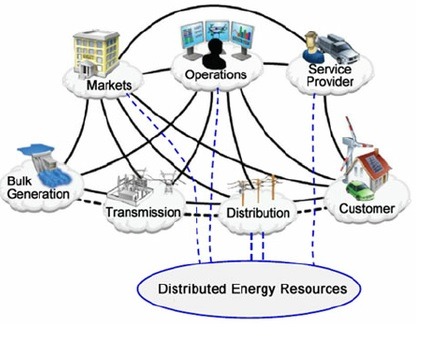
3. IEEE Three-Tier Architecture Model: IEEE considers the IoT architecture to be three-tiered with all the sensor devices treated as the base with networking and data communications as well as applications able to be built on top of it.
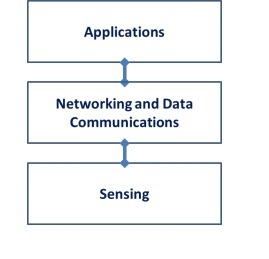
4. ETSI Architectural Model for M2M Communication: The European Telecommunications Standards Institute (ETSI) has developed a model for M2M devices which consists of two fundamental layers: a device and gateway domain layer and a network domain layer.
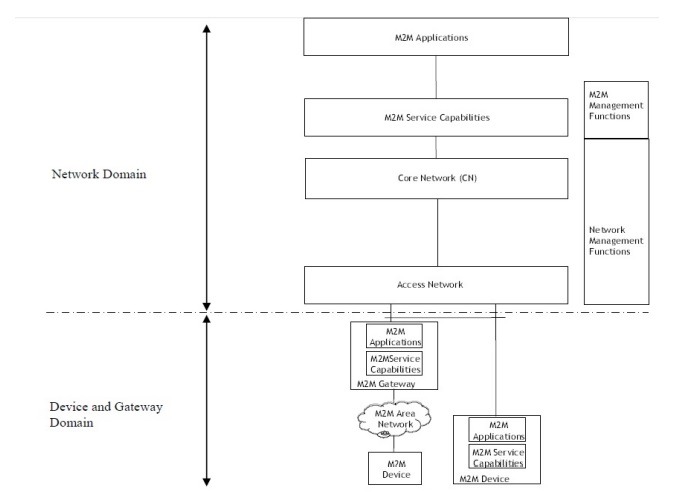
Non-Standardized IoT Architecture Models (Proprietary)
The thing is, despite the insistence of standardized bodies, many IoT companies are having their own pace of development, which is much faster, leading them to have separate IoT architectures of their own.
For example, Amazon’s AWS IoT follows a three-layered IoT model which comprises device software, connectivity and control services, and analytics services. AWS IoT Greengrass is a well-known example of device software.
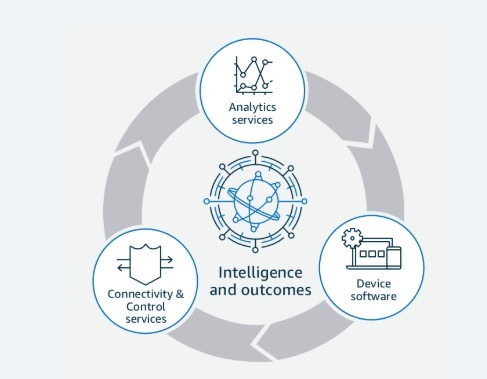
IoT Architecture Layers
No matter the difference in high-level overview, all IoT architectures have core layers which come into play at a certain point.
Device layer: most IoT architectures would consider this at the bottom. A device could be a Raspberry Pi or an actual IoT core.
Also, sensors and actuators such as accelerometers, gyroscopes, and GPS pointers can be considered a part of the device layer.
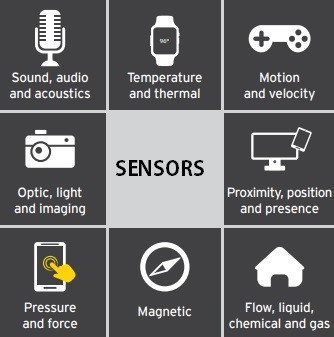
Networking layer: at this layer, we will have various networks such as Wi-Fi, 5G, LoRaWAN. They can also be classified as a Transport layer in IoT.
Edge or Fog layer: many IoT devices exist in the periphery of the IoT network. These are called edge or fog solutions comprising databases, containers, and other cloud interfacing solutions.
Cloud layer or datacenter: this should obviously sit at the top as the entirety of IoT operations are centered around this. An Amazon AWS EC2 cloud, which hosts several data centers, would be at the highest layer.
Summary
As was shown above, defining a strict IoT architecture along the lines of the Internet TCP/IP model is unrealistic. Given the massive variation in IoT networks, the best we can hope for in the future are some common elements present in all IoT networks.
Do you have any knowledge about standardization in IoT architecture? Please share any latest developments you may be aware of in the comments.








